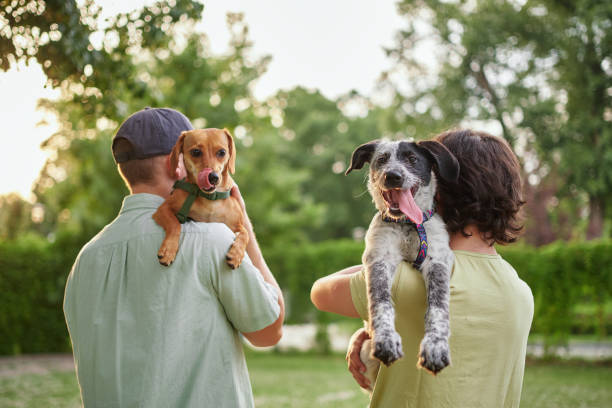Daily Exercise Routines for Keeping Your Dog Fit and Healthy
Regular exercise is essential for keeping your dog both physically fit and mentally stimulated. However, not all dogs require the same amount or type of exercise. In this post, we’ll explore exercise routines tailored to different dog breeds and energy levels to ensure your furry friend stays healthy and happy.
Why Exercise is Important for Your Dog
Exercise is crucial for dogs’ physical and mental well-being. It helps:

- Prevent obesity by burning calories and maintaining a healthy weight.
- Improve behavior by reducing boredom, anxiety, and destructive tendencies.
- Strengthen muscles and joints, reducing the risk of injury or arthritis.
- Enhance mental stimulation, keeping your dog sharp and engaged.
Every dog has unique needs based on breed, size, and energy level, so it’s essential to provide the right amount and type of activity.
High-Energy Breeds: Intense Workouts for Active Dogs
Dogs like Border Collies, Australian Shepherds, and Jack Russell Terriers are known for their boundless energy. They require high-intensity activities to stay happy.

Exercise Ideas:
- Running and Jogging
These dogs make excellent running companions. A daily run of 30–60 minutes is ideal for burning off their excess energy. - Agility Training
Set up an agility course in your yard or join a local agility class. Jumping through hoops, navigating tunnels, and weaving through poles will challenge their body and mind. - Fetch and Frisbee
Engage your dog in a fast-paced game of fetch or frisbee in the park. This not only satisfies their exercise needs but also taps into their natural herding or hunting instincts.
Medium-Energy Breeds: Balanced Exercise for Average Activity Levels
Breeds like Labrador Retrievers, Beagles, and Bulldogs have moderate energy levels and benefit from a balanced exercise routine.

Exercise Ideas:
- Daily Walks
A brisk 30–45-minute walk, twice a day, is sufficient for most medium-energy dogs. Walking provides gentle cardio and allows them to explore their environment. - Interactive Playtime
Toys like tug ropes or puzzle feeders engage both their body and mind. A 20-minute play session after their walk can keep them entertained and satisfied. - Swimming
For dogs that love water (like Labs), swimming is a fantastic low-impact exercise that strengthens muscles and supports joint health.
Low-Energy Breeds: Gentle Activities for Calm Dogs
Low-energy breeds such as Basset Hounds, Pugs, and Shih Tzus still need exercise but at a much gentler pace. These dogs enjoy light activities.

Exercise Ideas:
- Short Walks
A slow-paced walk for 20–30 minutes is usually enough for these breeds. Walking helps with mobility and prevents weight gain, but they don’t need intense physical activity. - Gentle Play Indoors
Indoor play with soft toys, or low-impact games like hide-and-seek, can keep them entertained without overexertion. - Training Sessions
Mental stimulation is just as important as physical exercise. Short obedience or trick-training sessions keep their minds engaged and help strengthen your bond.
Adjusting for Age and Health
As dogs age, their exercise needs change. Older dogs may develop joint issues or reduced stamina, requiring modified routines.

Exercise Tips for Senior Dogs:
- Shorter, Slower Walks
Limit walks to 15–20 minutes, ensuring they are on soft surfaces to reduce strain on joints. - Swimming
If your dog enjoys water, swimming can be a gentle way to keep their muscles active without stressing their joints. - Mental Stimulation
Interactive puzzle toys or scent games are great alternatives to high-energy activities, providing stimulation without physical strain.
Final Thoughts
Exercise is essential for dogs of all breeds and energy levels, but it’s important to tailor routines to suit their individual needs. Whether your dog is an energetic runner or a calm companion, finding the right balance of physical and mental stimulation will keep them healthy, happy, and engaged.











